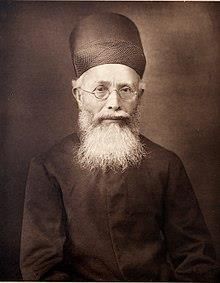Expected Questions with Answers- 1 | Indian Economy for UPSC CSE PDF Download
Question: 1. The emphasis in the Seventh Plan was on________
Ans: Food, work and productivity
Question: 2. The basic objectives of Indian Planning are________
Ans: Economic Growth, Self-reliance and Employment generation
Question: 3. The National Development Council is mainly concerned with________
Ans: Approval of five-year plans National Development CouncilQuestion: 4. What is the public sector outlay for the Eighth five-year plan 1992-97________
National Development CouncilQuestion: 4. What is the public sector outlay for the Eighth five-year plan 1992-97________
Ans: 434,100 crore
Question: 5. The National income in India is estimated by the________
Ans: Central Statistical Organization.
Question: 6. Since 1950-51 the percentage of contribution of the tertiary sector to India’s national income has been________
Ans: Increasing
Question: 7. The annual growth rate of national income in seventh five year plan was ________
Ans: 5.8%
Question: 8. The year ________ experienced a negative growth rate in national income.
Ans: 1992-93
Question: 9. The rate of growth of National Income from 1950-51 to 1980-81 was________
Ans: 3.4%
Question: 10. The first estimate on national income for the country was prepared by________
Ans: Dadabhai Naoroji Dadabhai NaorojiQuestion: 11. What is MCX-SX?
Dadabhai NaorojiQuestion: 11. What is MCX-SX?
Ans: Third on-line trading share market in India
Question: 12. According to the 1891 census the population of India was approximately________
Ans: 24 crore
Question: 13. According to the 1991 census the population of India is approximately________
Ans: 84.4 crore
Question: 14. The ‘Year of Great Divide’ refers to________
Ans: rapid growth-rate of population after 1921
Question: 15. According to 1991 census, the density of population (provisional) in Indian was________
Ans: 267
Question: 16. India’s first Plastic Park is being developed in____
Ans: Odisha
Question: 17. As per 1991 census, the literacy rate (among population aged 7 years and above) in India is________
Ans: 52.11 per cent
Question: 18. As per 1991 census, the literacy rate among females (aged 7 years and above) in India is________
Ans: 39.42 per cent
Question: 19. The policy of family planning was adopted by the Government in________
Ans: 1952
Question: 20. The Lakadawala committee’s latest estimate shows that the percentage of people living below poverty line is________
Ans: 39.3%
Question: 21. At 1984-85 prices the poverty line in urban areas is marked________
Ans: Rs 122
Question: 22. The poverty became major concern for the first time in________
Ans: Fourth plan
Question: 23. The number of families benefitted by IRDP during seventh plan were________
Ans: 191.2 lakh
Question: 24. Inflation is a result of ________
Ans: Decrease in money supply InflationQuestion: 25. The price rise in India has been a continuous phenomenon since________
InflationQuestion: 25. The price rise in India has been a continuous phenomenon since________
Ans: 1939
Question: 26. In India the inflation is measured by________
Ans: WPI
Question: 27. What is meant by white Lebel ATM?
Ans: ATM installed by non-banking companies.
Question: 28. The third oil shock occurred in________
Ans: 1990-91
Question: 29. The land ceiling legislation was actually introduced by the state Government during the________
Ans: Second Plan
Question: 30. When was National Banboo Mission Commissioned?
Ans: 2006
Question: 31. Land Development Banks provide Credit to farmers for________
Ans: Long-term needs
Question: 32. The ARDC which was established in 1963 was concerned with________
Ans: Agricultural finance
Question: 33. The ARDC has now been taken over by________
Ans: NABARD NABARD symbol Question: 34. The new name of Agricultural Prices Commission which was set up in 1965 is________
NABARD symbol Question: 34. The new name of Agricultural Prices Commission which was set up in 1965 is________
Ans: Commission for Agricultural Costs and Prices
Question: 35. The ratio of cultivable area to the total geographical area of the country is approx________
Ans: 56.53%
Question: 36. The Industrial Policy which first expressed the concept of a mixed economy for India came in________
Ans: 1948
Question: 37. Capital-intensive industries cause________
Ans: Vast employment opportunities
Question: 38. Which financial institution (other than commercial banks) in India finances industries to the maximum extent?
Ans: IDBI
Question: 39. The industrial policy statement 1980 aimed at________
Ans: Optional utilization of the installed capacity, Providing additional employment, Maximizing production
Question: 40. The industrial licensing policy inquiry committee which submitted its report in 1969 is popularly known as the________
Ans: Dutt Committee
Question: 41. The major thrust of the new industrial policy announced on May 31, 1990 was to pro-mote________
Ans: Small scale and agro-based industries
Question: 42. The Industrial Policy announced on May 31, 1990 raised the investment limit for small scale sector from Rs 35 lakh to Rs.________
Ans: 60 lakh
Question: 43. The number of industries reserved for the public sector has been reduced by the July 91 Industrial Policy from 18 to________
Ans: 8
Question: 44. During 1991-92 the manufacturing sector witnessed a growth rate of________over the previous year.
Ans: –1.6
Question: 45. The stagnation during 1991-92 in industrial production was due to________
Ans: Mining and manufacturing sectors
Question: 46. The textile industry is the largest industry in the country accounted for about________ per cent of the total industrial output.
Ans: 20 Textile industryQuestion: 47. The Board for Industrial and Financial Reconstruction (BIFR) was set up in ________under the Sick Industrial Companies (Special Provisions) Act, 1985 to revise potentially viable sick industrial companies or to recommend the closure of totally non-viable companies.
Textile industryQuestion: 47. The Board for Industrial and Financial Reconstruction (BIFR) was set up in ________under the Sick Industrial Companies (Special Provisions) Act, 1985 to revise potentially viable sick industrial companies or to recommend the closure of totally non-viable companies.
Ans: January 1987
Question: 48. The functions of the Reserve Bank of India are________
Ans: Formulating monetary policy and distributing all notes and coins except one rupee.
Question: 49. Zero Landless Project has been launched in _____
Ans: Kerala
Question: 50. NABARD was established in________
Ans: 1982
|
173 videos|487 docs|159 tests
|
FAQs on Expected Questions with Answers- 1 - Indian Economy for UPSC CSE
| 1. What is the meaning of "FAQ"? |  |
| 2. What is the importance of having an FAQ section on a website? |  |
| 3. How can I create an effective FAQ section for my website? |  |
| 4. Can an FAQ section help with search engine optimization (SEO)? |  |
| 5. How should I promote the FAQ section of my website to ensure maximum visibility? |  |

















